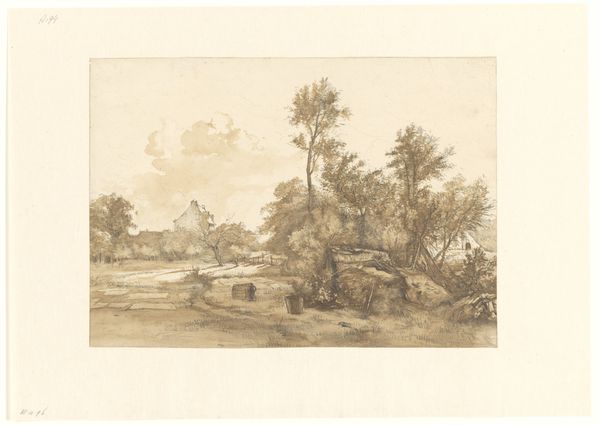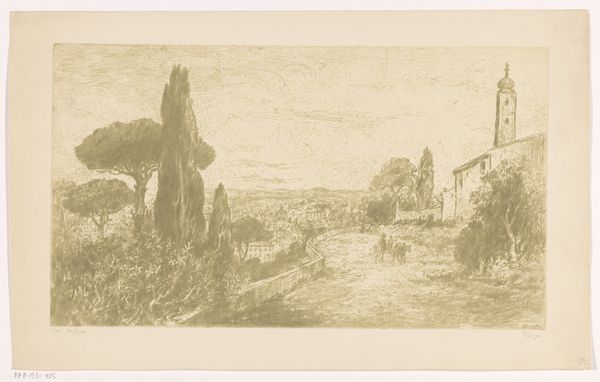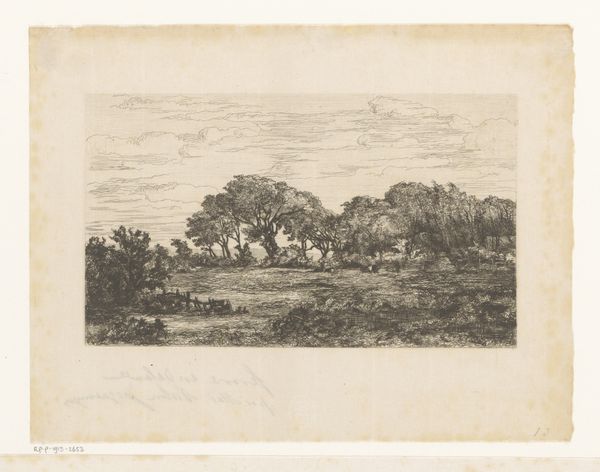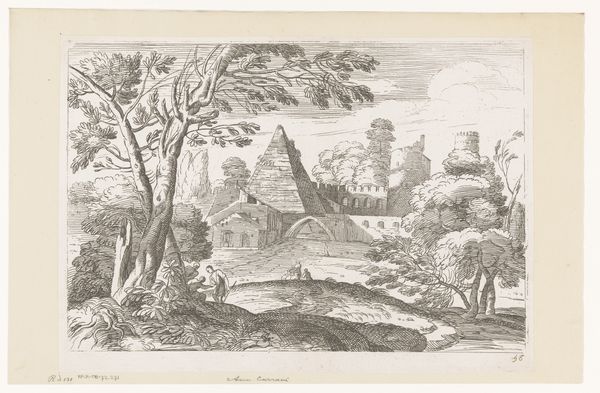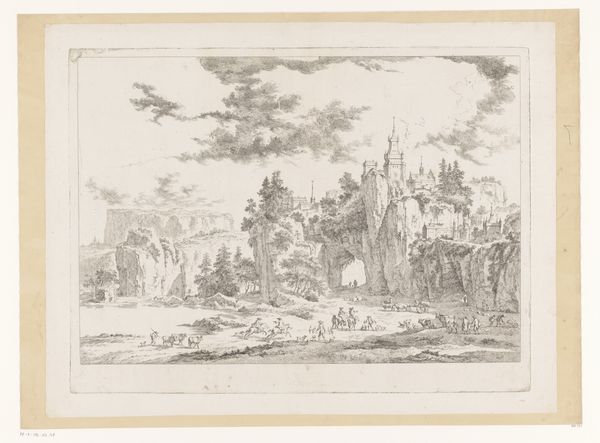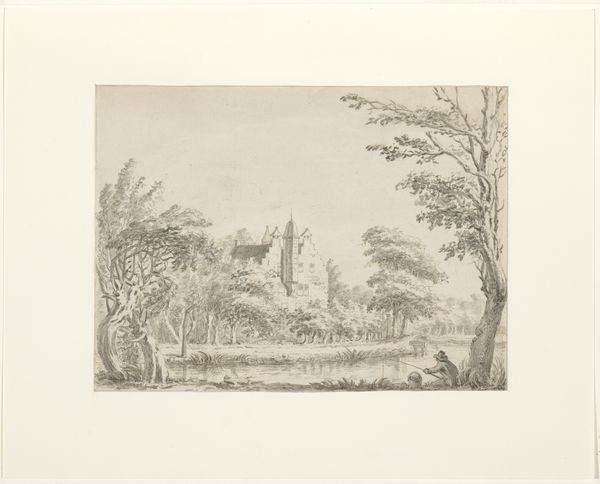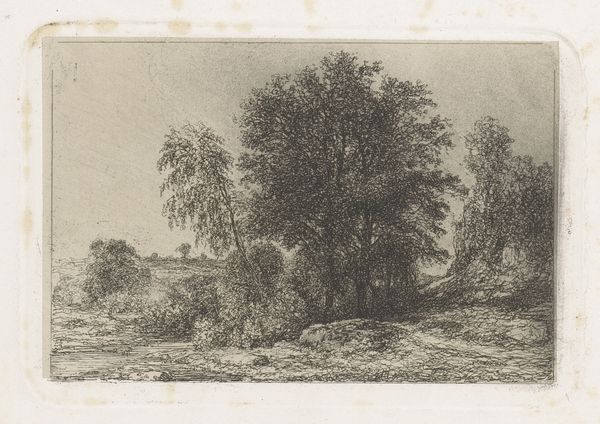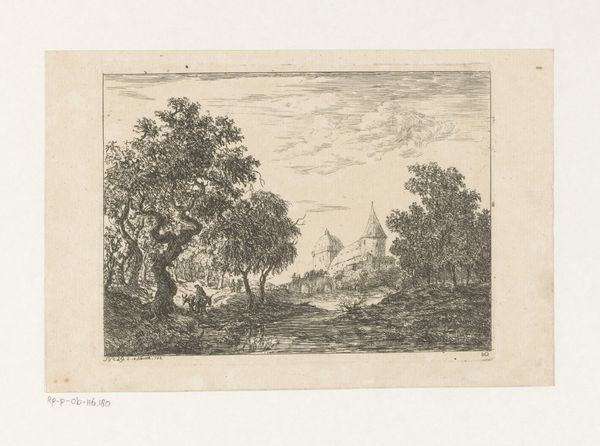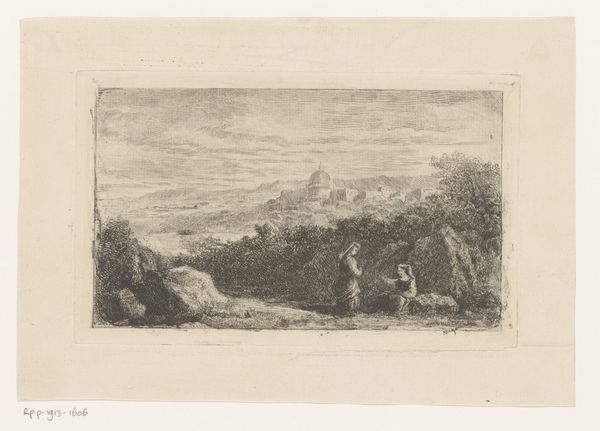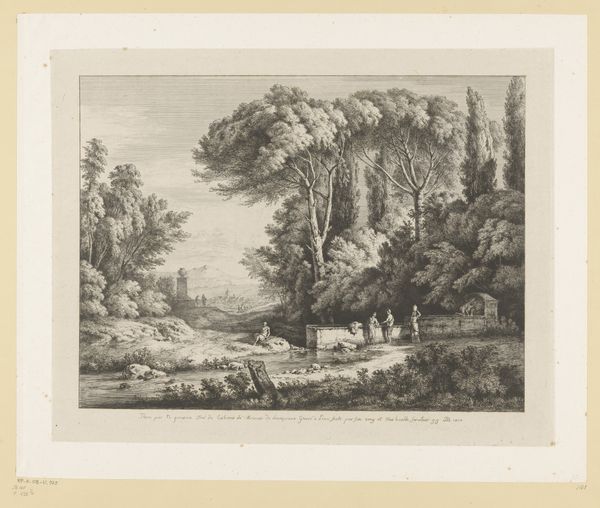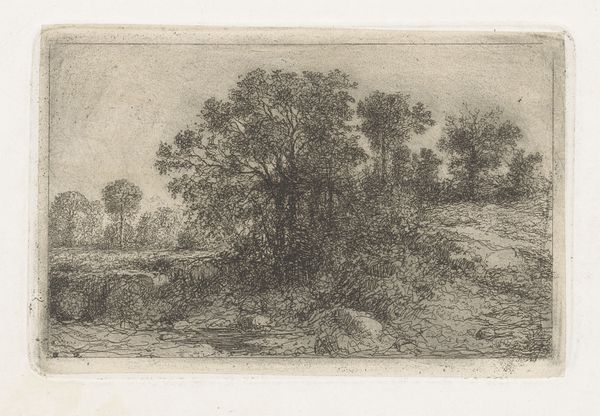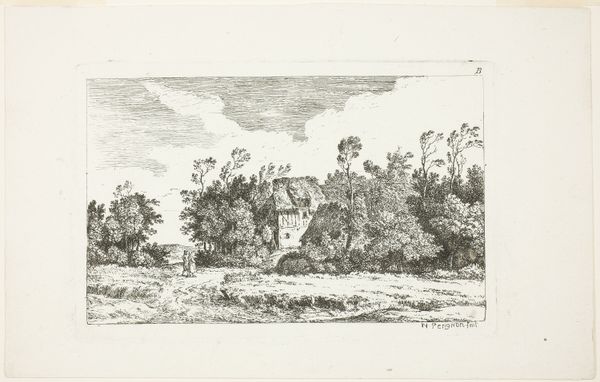
print, etching, engraving
# print
#
etching
#
landscape
#
etching
#
watercolour illustration
#
engraving
Dimensions: height 274 mm, width 496 mm
Copyright: Rijks Museum: Open Domain
Curator: This delicate etching is called "Landschap, Rome," or "Landscape, Rome," dating from 1873 to 1931, created by Etienne Bosch. It's a lovely sepia tone print, quite small, I believe. Editor: Oh, a quiet sigh of a landscape. Immediately, the tones remind me of old photographs, faded and dreaming. It feels very still. Curator: Absolutely. Bosch seems fascinated by creating this hazy distance between the viewer and Rome. Look at how the monumentality of St. Peter's dome is softened by the light, almost dematerialized. The foreground, though, is much more defined, those sharp trees almost guard the scene. Editor: Yes! The contrast makes it seem like we're observing from some secret vantage point. Are we allowed to see Rome in its full glory? The trees almost feel like witnesses, as old and silent as the city itself. Did Bosch create this piece while visiting? I wonder what part of Rome struck him enough to capture in his piece. Curator: We don't know if it's created from direct observation. I think we need to consider the context of printmaking at the time, the rise of tourism and the Grand Tour, which allowed images to circulate. Was Bosch thinking of that ideal? Did it give an impression of that city and a particular taste of what it meant to appreciate and imagine it? Editor: That's fascinating. So it's not just about the image of Rome, but also the act of disseminating it. To possess the city, in a way, through the print itself. Makes one ponder on ownership, really. Does that mean a more distant, even detached understanding for viewers across Europe? Curator: Perhaps. Or maybe it allows access, albeit mediated, to the power of Rome's legacy. It raises questions about how we see and understand the world around us. How the picturesque might allow some to access history, landscape, and power dynamics. Editor: This seemingly gentle landscape becomes a portal into so many layers of interpretation. A silent invitation, I think. It feels so good. Curator: Precisely. Art is all about interpretation, right?
Comments
No comments
Be the first to comment and join the conversation on the ultimate creative platform.
